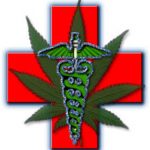By: Alison Crocket, Senior Advisor, UNAIDS Date: 15 March 2012 Place: Vienna, Austria
Occasion: Fifty-fifth session of the Commission on Narcotic Drugs
Statement to the Fifty-fifth session of the Commission on Narcotic Drugs
Thank you madam chair,
For giving me the floor to address this plenary session on preventing HIV transmission amongst injecting drug users. We would like to thank the executive director for his report “Responding to the prevalence of HIV/AIDS and other blood borne diseases among drug users” and are grateful for the leadership of UNODC as the cosponsor tasked with reducing HIV transmission amongst people who inject drugs and prisoners. From the report it is clear to see the considerable achievements of the HIV unit in UNODC this year.
In June 2011, a High level meeting took place at the General Assembly to review the progress made and challenges remaining after 30 years of AIDS, the inevitable conclusion was of course that much has been achieved but much more needs to be done. In particular injecting drug users along with sex workers and men who have sex with men were identified as the key populations, who are particularly vulnerable to HIV and who therefore require our combined efforts and targeted, appropriate responses.
In the new declaration agreed by member states at that meeting, ten new, bold targets were set, one of which is to reduce HIV transmission amongst injecting drug users by 50% by 2015. To understand the rationale behind this target, one need only look at the global situation. As the executive director points out in his report, HIV transmission amongst injecting drug users is one of the fastest growing epidemics in the world. An estimated one in three new infections outside of sub-Saharan Africa are as a result of the use of contaminated needles and syringes or sexual transmission from an injecting drug user to their sexual partners.
Since 2009, the technical guide to set targets to reduce HIV transmission amongst people who use drugs has clearly articulated what works. But despite this, services to drug users that will reduce their HIV risk are still not widely available. Globally, only 8 out of every hundred people who inject drugs have access to Opiod Substitution Therapy, 4 in every hundred people who inject drugs and who are eligible have access to Anti Retroviral Treatment and 8 out of 100 have access to Needle and Syringe Programmes.
Since then further studies in countries as diverse as the Ukraine, Pakistan and Kenya have shown that the target set in the political declaration is possible to achieve if a combination of Needle and Syringe Programmes, Opiod Substitution Therapy and Antiretroviral Treatment for those that are eligible are delivered to a scale and quality that is adequate and in an environment that facilitates their access.
Madame Chair, the good news is therefore that we know what to do
First, we must create an enabling environment;
Drug users in many countries experience stigma and discrimination in many aspects of their lives. HIV Prevention, Treatment and Care initiatives cannot succeed where life saving interventions are criminalised and where drug users risk violence and or incarceration if they attempt to use them. That is why it is important for public health authorities to work in close collaboration with criminal justice and law enforcement officials, in order to ensure that policies and legislation complement common objectives. Leaders must assess how laws and law enforcement affect the HIV response and ensure that the law works for HIV prevention and not against it. It is in no ones interest to neglect public health initiatives that would reduce health costs and encourage safer, more secure communities.
Second, we must help mobilize communities to ask for what they need and to help themselves.
It is the firm belief of UNAIDS that the AIDS epidemic cannot be reversed or halted without the full engagement and participation of all key affected populations. Programmes that empower civil society to know and demand their rights need to be expanded significantly. These include programmes to reduce HIV related stigma and discrimination, provide legal aid and legal literacy, reform laws, train police and health care workers on non/discrimination reach out to vulnerable populations and address violence against women.,. UNAIDS are committed to continue to support communities of drug users, sex workers and men who have sex with men, to articulate their needs and demand their basic human rights wherever they are.
Thirdly, we need to introduce good quality, user friendly services to a scale that can make a difference.
The time for pilot projects is over. Needle and Syringe programmes and Opiod Substitution Therapy have been researched and tested more than the vast majority of HIV prevention interventions, and the good news is – they work. Indisputably, unequivocally, absolutely work. Alongside confidential and voluntary HIV counseling and testing and the distribution of condoms these interventions will reduce the incidence of HIV transmissions amongst people who inject drugs in any country. The solution is cheap, effective and available. Even if one is not persuaded to provide these interventions on the grounds of care and compassion, even if you don’t believe that these measures facilitate compliance with international human rights obligations, the fact is that injecting drug users have the potential to be productive members of our communities and loving responsible family members as long as we provide them with
the health care and support they need and give them the opportunity to avoid contracting a life threatening, incurable condition. It makes solid economic sense.
Madam chair, Time is short, money is tight, but we can turn the tide. The global economic crisis has required us all to prioritise our activities to justify spend and to show value for money. Every cent we spend to reduce transmission of HIV amongst people who use drugs needs to be targeted on interventions that work., the evidence is clear, unequivocal and compelling all we need to do now is do it.
via CNDBlog




 Creative Commons Attribution
Creative Commons Attribution